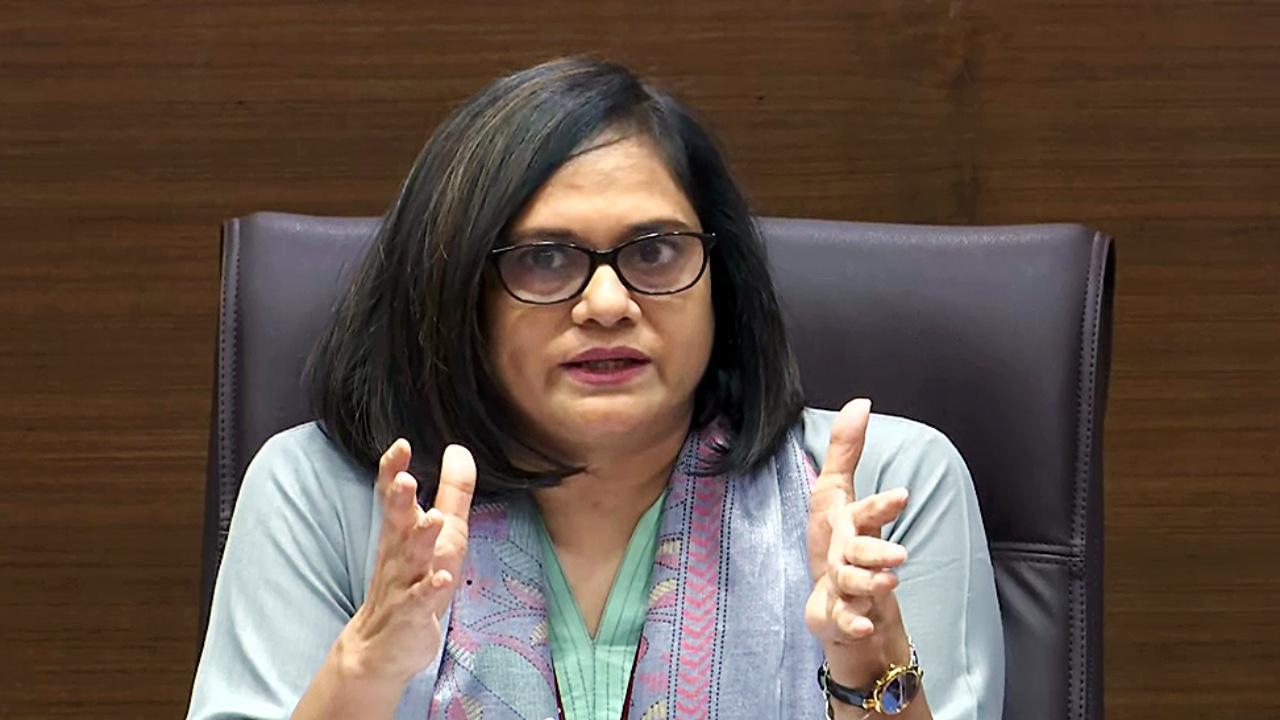Two key officials of the Railway Board -- Principal Executive Director of Signalling Sandeep Mathur and Member of Operation and Business Development Jaya Varma Sinha -- on Sunday explained how the Odisha train accident might have occurred

Railway Board Operation and Business Development Member Jaya Varma Sinha addresses a press conference on the important developments related to the Odisha train accident, in New Delhi on Sunday. ANI Photo
Two key officials of the Railway Board -- Principal Executive Director of Signalling Sandeep Mathur and Member of Operation and Business Development Jaya Varma Sinha -- on Sunday explained how the Odisha train accident might have occurred.
ADVERTISEMENT
The officials also gave a virtual clean chit to Coromandel Express driver, whose locomotive was involved in the three collision in Odisha's Balasore district that left over 288 people dead and hundreds injured. The railways said the Coromandel Express was "not over-speeding" and received the green signal to enter a loop line on which a goods train was stationary, PTI reported.
They described the functioning of the interlocking system which prima facie seemed to have been part of the problem which led to the accident, in which at least 288 people were killed.
Sinha said the direction, route and signal were set for the Coromandel Express.
"Green signal means that in every way the driver knows that his path ahead is clear and he can go forward with his permitted maximum speed. The permitted speed at this section was 130 kmph and he was running his train at 128 kmph which we have confirmed from loco logs," she said.
The crash involving Bengaluru-Howrah Superfast Express and Shalimar-Chennai Central Coromandel Express and a goods train occurred around 7 PM on Friday near the Bahanaga Bazar station in Balasore, about 250 km south of Kolkata and 170 km north of Bhubaneswar.
Citing reports till Saturday evening, officials said 288 people were killed in the accident. As many as 1,175 people were admitted at various hospitals, including private ones.
The Bengaluru-Howrah Superfast Express train was running at a speed of 126 kmph.
"In both the trains, there was no question of over-speeding. Preliminary finding has found that there is a signalling issue," Sinha said.
"Only one train was involved in the accident, it was the Coromandel Express. The Coromandel Express crashed with the goods train and its coaches went on top of the goods train. It was an iron ore-laden train, a heavy train, therefore the entire impact of the collision was on the train," she said.
Earlier on Sunday, Railway Minister Ashwini Vaishnaw said that the "root cause" of the accident has been identified as issues with the point machine and the electronic interlocking system.
A preliminary report has also said that Coromandel Express had entered the loop line at the station on which a stationary iron ore-laden goods train was parked.
Explaining how the two key components could be responsible for the accident, Mathur said that if the train has to move to a loop line the point machine has to be operated.
"We have to see whether the track ahead is occupied or not. Signal is interlocked in such a manner that it will show if the line ahead is occupied or not. It will also be known whether point is taking the train straight or towards loop line.
"When the point shows straight and the track ahead is not occupied then the signal is green and if the point is taking the train on loop and track is clear then signal is yellow and the route is shown of a different direction," he said.
He said the interlocking system is a safe way to guide the train out of a station by connecting point, traction unit and interlocking system with signal so that the train's movement is clear.
These interlocking can be of two types -- electronic or non-electronic. Both the officials said that the system is both "error proof and tamper proof".
"It is called a fail safe system, so it means that even if it fails, all the signals will turn red and all train operations will stop. Now, as the minister said there was a problem with the signalling system. It could be a physical error, whereby someone has done some digging without seeing the cables," she said. (With inputs from PTI)
 Subscribe today by clicking the link and stay updated with the latest news!" Click here!
Subscribe today by clicking the link and stay updated with the latest news!" Click here!







